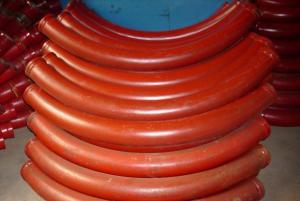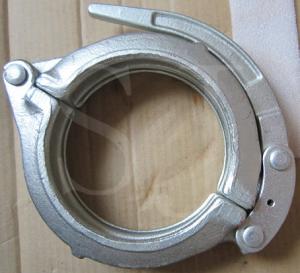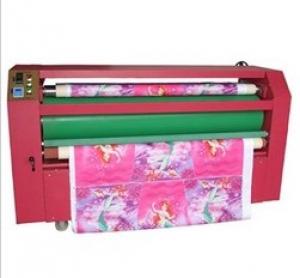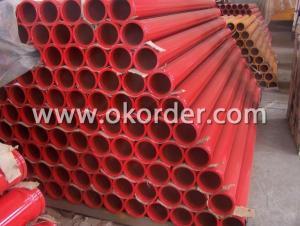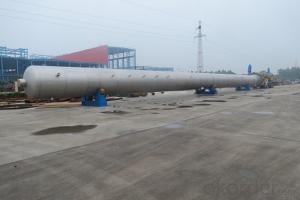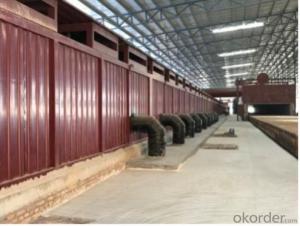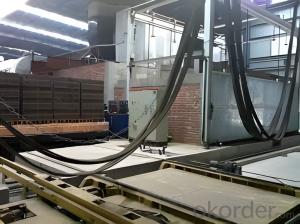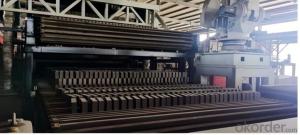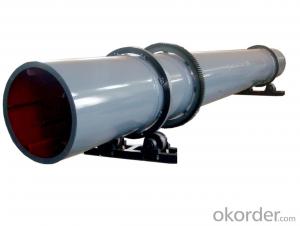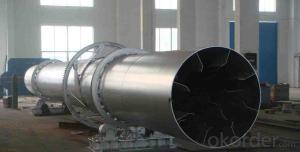Dry Roasting Equipment---Tunnel Roasting Kiln---Straight Tunnel Kiln---Masonry Tunnel Kiln
- Loading Port:
- China main port
- Payment Terms:
- TT OR LC
- Min Order Qty:
- 1 m²
- Supply Capability:
- 50 m²/month
OKorder Service Pledge
OKorder Financial Service
You Might Also Like
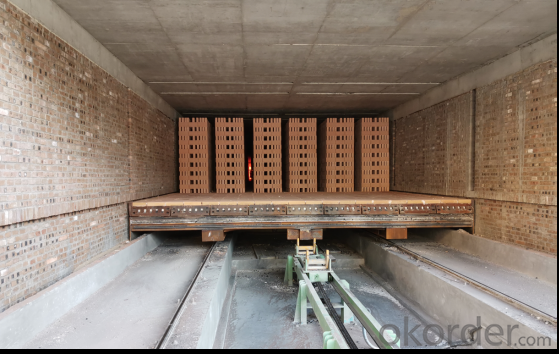
Tunnel roasting kiln can be divided into straight tunnel kiln (with kiln car) and mobile rotary tunnel kiln (without kiln car). Straight tunnel kilns can be further divided into masonry tunnel kilns and prefabricated tunnel kilns in terms of construction methods. The mobile rotary tunnel kiln belongs to the assembled tunnel kiln.
Straight Tunnel Kiln:
(1) Main products: sintered bricks, common bricks, porous bricks, hollow bricks/blocks, roof tiles, hollow wall panels.
(2) According to the different output, the inner width of the tunnel kiln is divided into the following types:
① the inner width is 3.6 and 3.7 meters, suitable for daily output of 150,000-200,000 blocks, and annual output of 50-66 million (common bricks)
② the inner width is 4.6 and 4.8 meters, suitable for daily output of 210,000-250,000 blocks, and annual output of 69-82 million (common bricks)
③ the inner width is 5.4 and 5.6 meters, suitable for daily production of 260,000-300,000 pieces, and annual output of 85-100 million (common bricks)
④ the inner width is 6.9 and 7.2 meters, suitable for daily output of 310,000-400,000 blocks, and annual output of 102-132 million (common bricks)
⑤ the inner width is 9.2 and 9.4 meters, suitable for daily output of 600,000-620,000 pieces, and annual output of 165-200 million (common bricks)
(3) Kiln Body Structure
Masonry Tunnel Kiln:
The kiln wall is a composite wall, and the innermost layer is the working layer in contact with the high temperature. It is usually built with refractory materials (common bricks can be sintered below 600°C). The materials, grades and specifications of the refractory materials used are determined according to the firing temperature of the kiln. The middle layer is the thermal insulation layer, which is composed of various lightweight thermal insulation materials. The selected lightweight thermal insulation materials should not only provide thermal insulation, but also maintain long-term safe use without damage. The outermost layer is a load-bearing protective layer, which is multi-purpose sintering. This layer is mostly built with sintered common bricks and porous bricks to protect the lightweight thermal insulation material from damage and to bear the load of the kiln roof and the transverse thrust of the vault.
The roof of the kiln is a composite kiln item, which is hoisted on site. Commonly used kiln roof structures are refractory fiber module + refractory fiber blanket + sealed castable + steel beam; clay refractory slab + high alumina hanger + refractory fiber blanket + sealed castable + steel beam; light mullite Brick + high-aluminum hanging column + refractory fiber blanket + sealing castable + steel beam.
(4) Firing temperature: 950-1050℃
(5) Firing cycle: 26-40h
(6) Length of tunnel kiln: 110-170m
(7) Length and size of kiln car: It is determined according to the size of the billet stack and the internal and external combustion method. The length and size of the commonly used kiln car are: 3600mm, 3900mm, 4100mm, 4200mm, 4350mm, 4800mm, etc.
(8) Firing method: all internal combustion roasting; all external combustion roasting; combined internal and external combustion roasting.
(9) The roasting kiln is often equipped with a smoke exhaust system, a combustion system, a waste heat system, a backburning system, a cooling system, and a bottom pressure balance system. Each system consists of fans, pipes and regulating valves. The kiln has a large section, high output, small temperature difference between sections, and good thermal insulation performance. Computer automatic monitoring and control system to ensure the stability of thermal parameters and roasting quality
- Q: What is the best drying equipment?
- In order to overcome the above shortcomings. I plant in accordance with foreign advanced technology design and development through the flow box-type dryer, the working principle shown in Figure:
- Q: The working principle of belt dryer
- For the material temperature does not exceed 60oC requirements, can be used about 80oC dry gas. Multi-stage combination can better play the performance of belt dryer, and dry more uniform.
- Q: What are the common types of dryers?
- Roller scraper dryer is through the rotation of the cylinder, in a heat conduction way, will be attached to the outer wall of the cylinder liquid material or ribbon material, dry a continuous operation of equipment to be dry treatment of liquid from the high
- Q: What are the common drying methods?
- Mechanical dehydration method is through the way of the material pressure, will be part of the water extrusion. Commonly used in pressing, sedimentation, filtration, centrifugal separation and other methods. Mechanical dehydration method can only remove part of the material free water, combined with water remains Material, so the material after the mechanical dehydration of the material moisture content is still high, generally 40 to 60%, but the mechanical dehydration method is one of the most economical method.
- Q: How to solve the dryer a series of failures
- The dew point reading can help to find some problems, so the dry air dew point value should be monitored throughout the drying process. Dryer normal operation of the dew point reading should be 20of ~ 50of within a straight line, of course, the replacement of the dryer caused by small fluctuations are normal. If the dryer is operating normally, the dew point at the dry air inlet should be at least 30of lower than the dew point at the return air outlet.
- Q: How to choose the right drying equipment and drying technology
- Materials can be divided into two kinds of hygroscopic and non-hygroscopic.
- Q: What are the types of drying equipment?
- the drying medium, the thermal efficiency is high, the product is not polluted, but the drying capacity by the metal wall heat transfer area limit, the structure is also more complex, often in vacuum operation; radiation dryer is the use of various radiation Emitting a certain wavelength range of electromagnetic waves, the wet material surface is selectively absorbed into heat after the dry; dielectric dryer is the use of high-frequency electric field effect, so that the wet material inside the thermal effect of drying
- Q: The development prospects of the dryer
- As a compressed air post-processing purification equipment, cold and dry control system will follow the host control technology and continuous improvement. Frequency control, online dew point measurement and control, operating conditions, real-time display and record preservation and so there is a lot of things to do.
- Q: What are the characteristics of the drum dryer?
- conventional direct heating rotary drum dryer conventional direct heating rotary drum dryer in the dry material and hot air Direct contact with the way of convection heat drying in accordance with the direction of flow between the hot air and material, divided into parallel and countercurrent.
- Q: What is a combination of drying equipment?
- Recently, a combination of different drying methods and different drying principles has been widely used, and a drying device capable of exerting their own advantages and making up their respective shortcomings.
Send your message to us
Dry Roasting Equipment---Tunnel Roasting Kiln---Straight Tunnel Kiln---Masonry Tunnel Kiln
- Loading Port:
- China main port
- Payment Terms:
- TT OR LC
- Min Order Qty:
- 1 m²
- Supply Capability:
- 50 m²/month
OKorder Service Pledge
OKorder Financial Service
Similar products
Hot products
Hot Searches
Related keywords

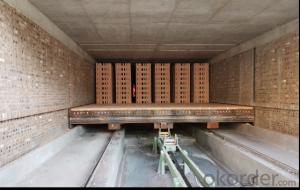
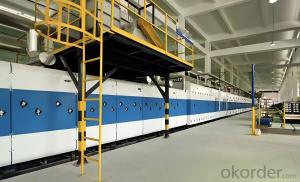
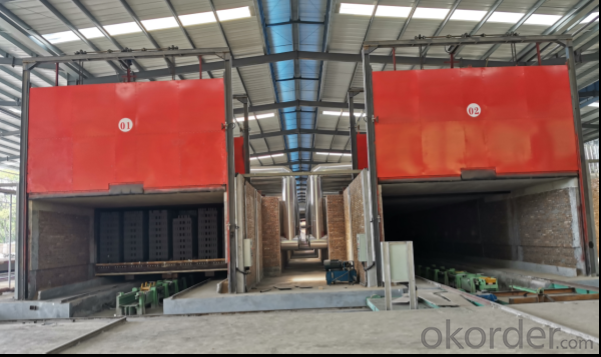

 Xi'an Research and Design Institute of Wall & Roof Materials Co,.Ltd.
Xi'an Research and Design Institute of Wall & Roof Materials Co,.Ltd.
